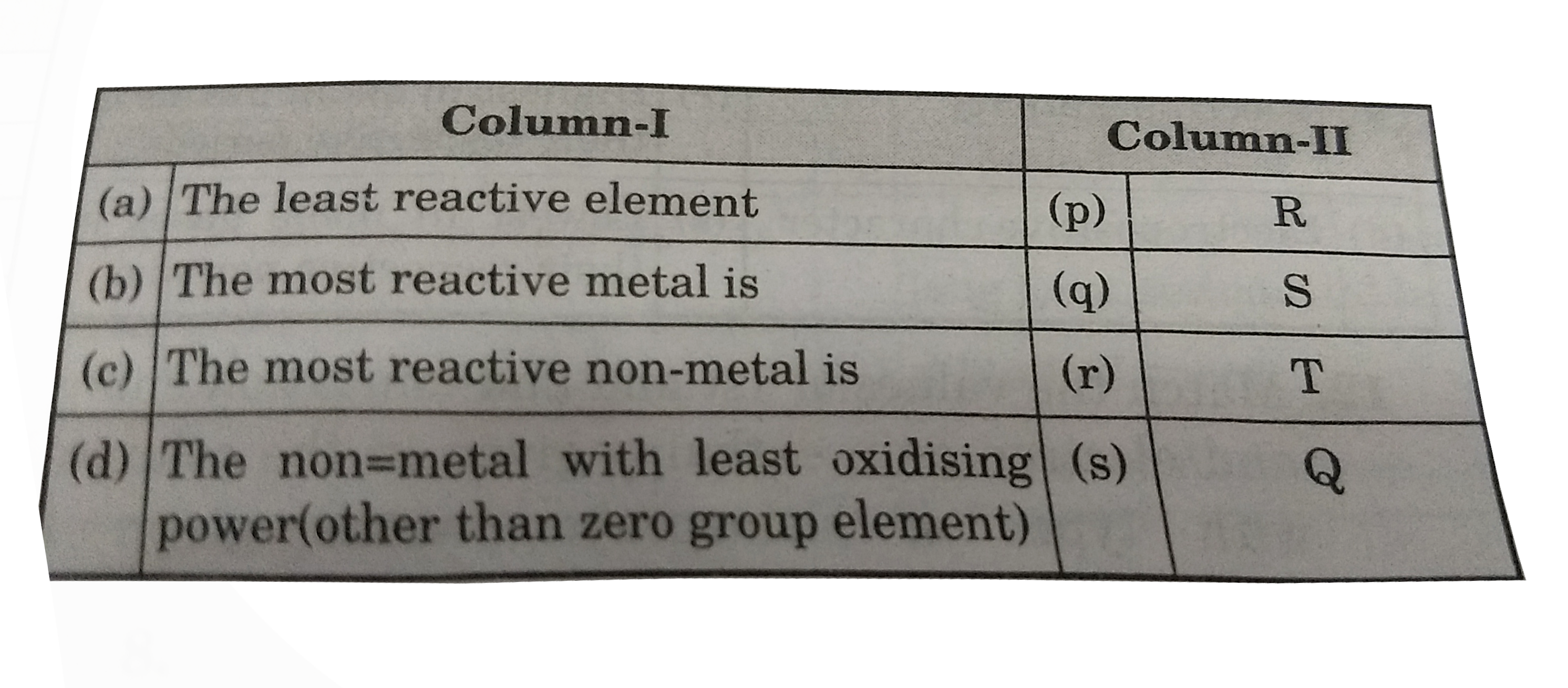Ionisation enthalpy (ΔtHlinkJmol−1) for the elements of group-13 follows the order
B>AI>Ga>In>TI
B<AI<Ga<In<TI
B<AI>Ga<In>TI
B>AI<Ga>In<TI
The correct Answer is:D
The decrease in ionisation enthalpy from B to AI is associated with increases in size. The observed discontinuity in the ionisation enthlapy values between AI and Ga and between In and TI are due to inability of d-and f-electronns which in nuclear change.
Topper's Solved these Questions
- THE P-BLOCK ELEMENTSBook:NCERT FINGERTIPSChapter:THE P-BLOCK ELEMENTSExercise:Assertion And Reason
Explore 15 Videos
- THE P-BLOCK ELEMENTSBook:NCERT FINGERTIPSChapter:THE P-BLOCK ELEMENTSExercise:Higher Order Thinking Skills
Explore 9 Videos
- STRUCTURE OF ATOM Book:NCERT FINGERTIPSChapter:STRUCTURE OF ATOM Exercise:Assertion And Reason
Explore 15 Videos
- THE S-BLOCK ELEMENTSBook:NCERT FINGERTIPSChapter:THE S-BLOCK ELEMENTSExercise:Assertion And Reason
Explore 15 Videos
Similar Questions
Ionisation enthalpy (ΔiH kJ mol−1) for the elements of group 13 follows the order.
View SolutionThe first (ΔH1) and second (ΔH2) ionisation enthalpies (in kJmol−1) and the (ΔHeg) electron gain enthalpy (in kJmol−1) of a elements are given below:

Based on the above information match the following columns.

View Solution
Knowledge Check
Ionisation enthalpy (ΔiH kJ mol−1) for the elements of group 13 follows the order.
AB > Al > Ga > In > TlBB < Al < Ga < In < TlCB < Al > Ga < In > TlDB > Al < Ga > In < TlThe first (ΔiH1) and second (ΔiH2) ionization enthalpies (in kJ mol−1) and the electron gain enthalpy (ΔegH)(in kJ mol−1) of the elements I, II, III, IV and V are given below

the least reactive non - metal and the most reactive metal of these are respectivelyAIV and VBII and VCV and IIIDV and IIThe first (ΔIH1) and second (ΔIH2) ionisation enthalpies (in kJ mol−1) and the (ΔegH) electron gain enthalpy (in kJ mol−1) of a few elements are given below:

The least reactive element is :APBQCRDT
The first ionisation enthalpy (ΔiHo−) values of the third period elements, Na,Mg and Si are respectively 496,737 and 786kJmol−1. Predict whether the first ΔiHo− value for Al will be more close to 575 or 760kJmol−1? Justify your answer.
View SolutionThe first ionisation enthalpy (ΔiHo−) values of the third period elements, Na,Mg and Si are respectively 496,737 and 786kJmol−1. Predict whether the first ΔiHo− value for Al will be more close to 575 or 760kJmol−1? Justify your answer.
View SolutionThe first ionization enthalpy (ΔtH) values of the third period elements, Na,Mg and Si are respectively 496, 737 and 786kJmol−1. Predict whether the first ΔtH value for Al will be more close to 575 or 760kJmol−1? Justify your answer.
View SolutionThe first (ΔiH1) and second (ΔiH2) ionisation enthalpies (inkJmol−1) and the (ΔegHө) electron gain enthalpy (inkJmol−1) of a few elements are given below:
Elements(ΔiH1)(ΔiH2)ΔegHөI5207300−60II4193051−48III16813374−328IV10081846−295V23725251+48VI7381451−40
Which of the above elements is likely to be
a. the least reactive element.
b. the most reactive metal.
c. the most reactive non-metal.
d. the least reactive non-metal.
e. the metal which can form a stable binary halide of the formula MX (X=halogen).
f. the metal which can form a predominantly stable covalent halide of the formula MX(X=halogen).
View SolutionFirst and second ionisation enthalpies(in KJ/mol) of few elements are given below:

Which of the above elements will form halides with formula MX2?
View Solution